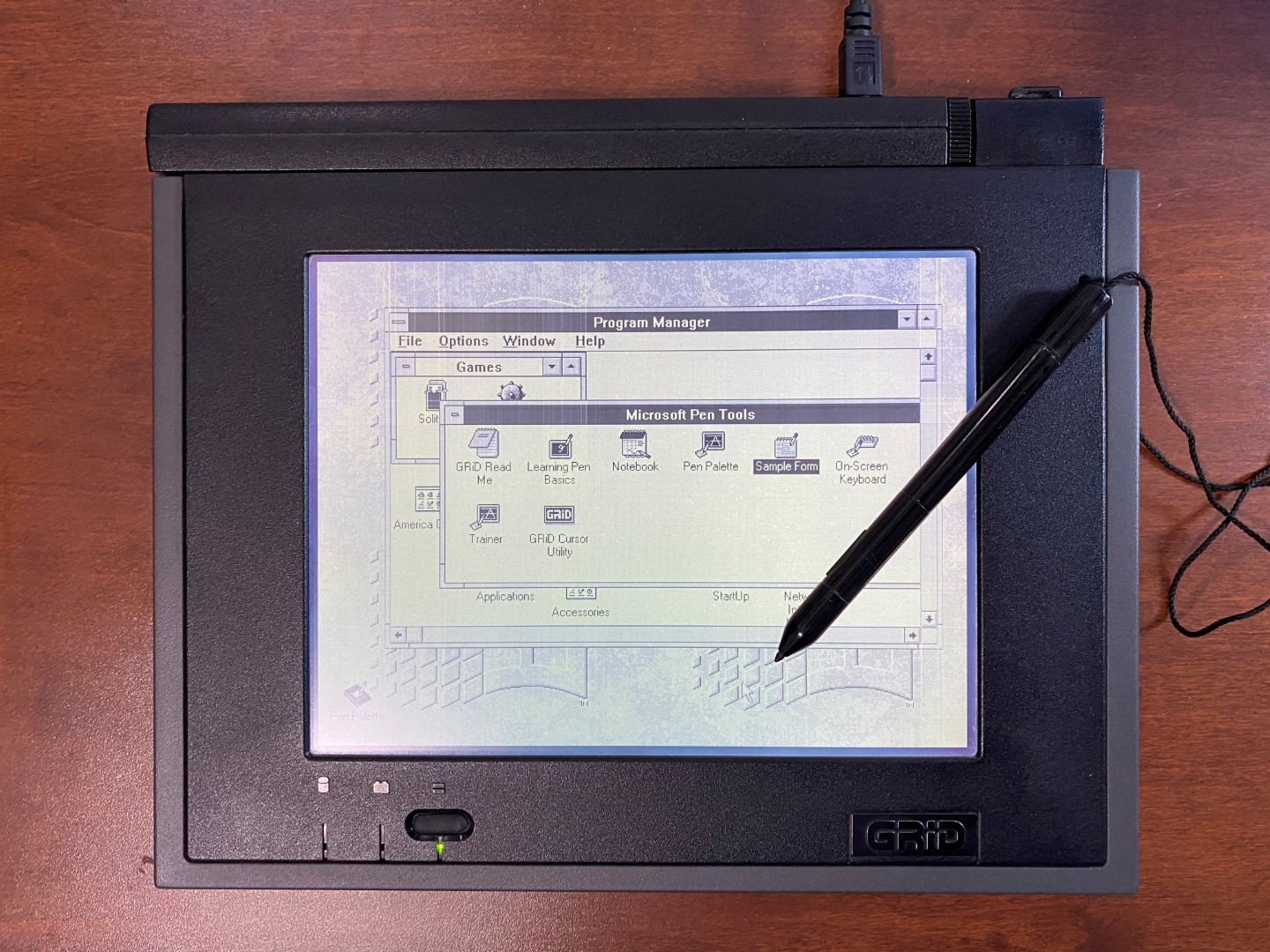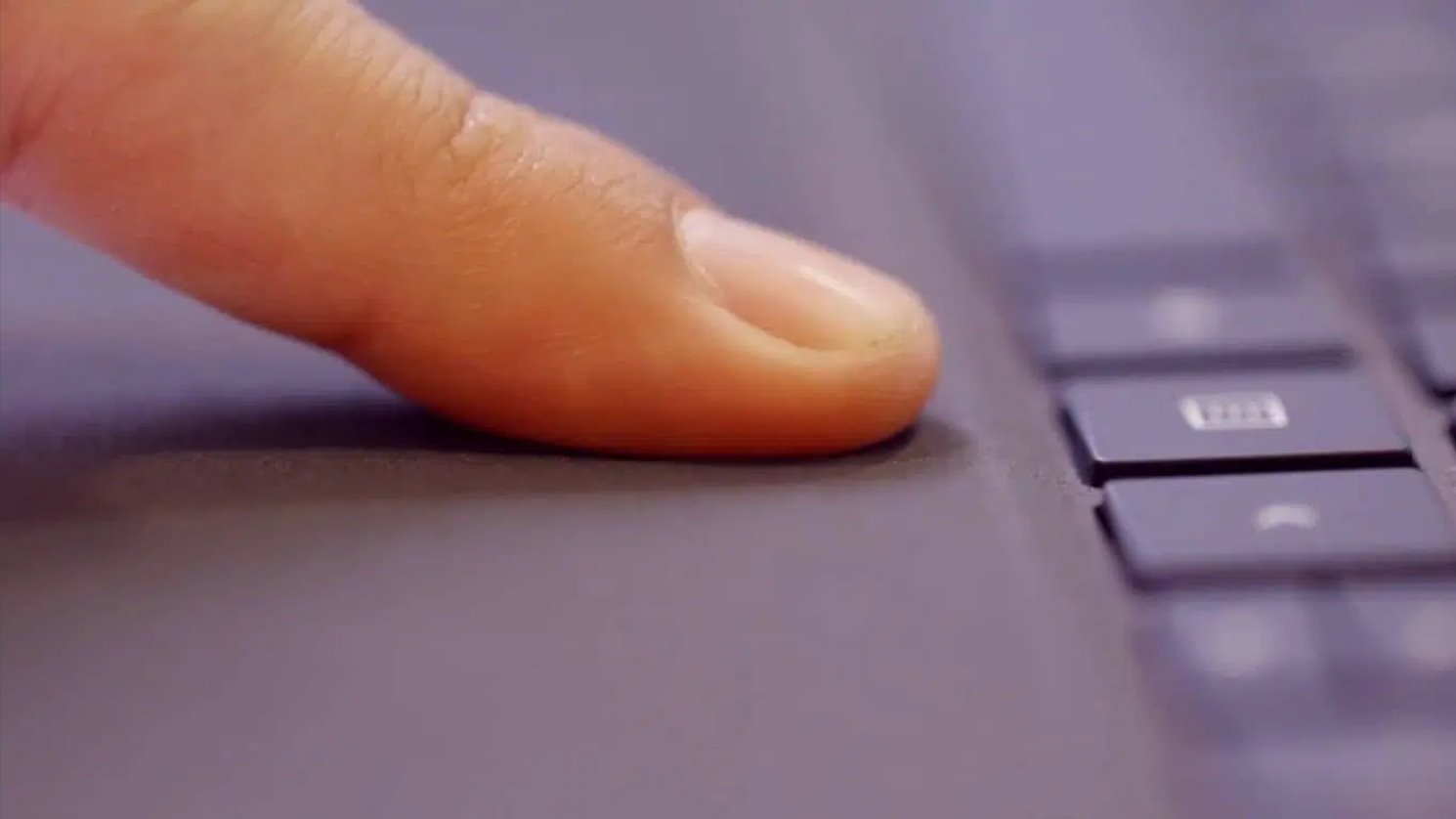Introduction
Tablets have become a ubiquitous part of our modern lives, revolutionizing the way we work, communicate, and consume media. These sleek and portable devices have quickly become a must-have gadget for people of all ages. But have you ever wondered when the first tablet was invented? In this article, we will take a journey through the history of tablet-like devices, exploring their evolution from visionary concepts to commercial products that paved the way for the modern tablet.
Before we delve into the early examples of tablets, it is important to understand what defines a tablet. A tablet is a portable computing device that typically features a touchscreen display and offers functionalities similar to those of a personal computer. It allows users to perform tasks such as web browsing, email communication, document editing, and multimedia playback.
The concept of a tablet-like device dates back several decades, with early examples emerging in the 20th century. These early devices laid the foundation for the technological advancements that would eventually lead to the development of the tablets we know today.
One such visionary concept was the Dynabook, conceived by computer scientist Alan Kay in the 1960s. While the Dynabook itself was never built, it served as a theoretical template for future tablet-like devices. Kay envisioned a portable computing device that would be compact, lightweight, and powerful – a concept that foreshadowed the modern tablet in many ways.
The first commercially available tablet-like device was the GRiDPad, introduced by GRiD Systems Corporation in 1989. This tablet featured a 10-inch monochrome display, a stylus for writing and drawing input, and a graphical user interface. While it was met with limited success, the GRiDPad paved the way for future tablet innovations.
What Defines a Tablet?
In order to understand the evolution of tablets, it’s important to establish what defines a tablet in the first place. A tablet is a portable computing device that typically features a touchscreen display and offers functionalities similar to those of a personal computer.
One of the defining characteristics of a tablet is its touchscreen interface. Unlike traditional computers that rely on keyboards and mice for interaction, tablets allow users to directly interact with the screen using their fingers or a stylus. This intuitive input method has contributed to the widespread popularity of tablets, making them accessible to people of all ages and technological abilities.
Another key aspect of tablets is their portability. Unlike desktop computers or even laptops, tablets are designed to be lightweight and highly portable. This allows users to easily carry them around and use them on the go, whether for work, entertainment, or other purposes. The compact and sleek form factor of tablets makes them an ideal companion for travelers, students, and professionals who need to stay connected and productive outside of a traditional office setting.
Tablets also offer a wide range of functionalities that are similar to those of traditional computers. From web browsing and email communication to document editing and multimedia playback, tablets provide a versatile platform for getting work done and consuming content. In addition, many tablets offer access to an extensive app ecosystem, allowing users to customize their devices with productivity apps, entertainment apps, games, and more.
Furthermore, tablets often feature long battery life, enabling users to use them for extended periods without the need for frequent charging. This is especially advantageous for those who rely on their tablets for work or entertainment while on the move.
In summary, what defines a tablet is its touchscreen interface, portability, wide range of functionalities, and long battery life. These features have made tablets a popular choice for individuals who value convenience, productivity, and entertainment on the go.
Early Examples of Tablet-Like Devices
The concept of tablet-like devices can be traced back to several decades ago, long before the modern tablets we know today came into existence. In this section, we will explore some of the early examples that laid the foundation for the development of tablets.
One of the pioneering examples is the Dynabook, envisioned by computer scientist Alan Kay in the 1960s. Although the Dynabook was never physically built, it served as a visionary concept that defined many aspects of future tablets. Kay envisioned a portable device that would resemble a notebook or clipboard, offering computing capabilities in a compact and lightweight form. The Dynabook concept included features such as a graphical user interface and a stylus for input, which are now commonly associated with tablets.
Another early example is the GRIDPAD, introduced by GRiD Systems Corporation in 1989. The GRIDPAD was one of the first commercially available tablets, featuring a 10-inch monochrome touchscreen display. It offered a stylus for writing and drawing input, as well as a graphical user interface that provided a user-friendly experience. While the GRIDPAD had limited commercial success, it showcased the potential of tablet-like devices and set the stage for future innovations in the field.
In the early 1990s, Apple released the Newton MessagePad, which can be considered a precursor to modern tablets. The Newton MessagePad featured a touchscreen display and allowed users to write with a stylus using handwriting recognition technology. While it was ahead of its time in terms of innovation, the Newton MessagePad faced challenges with its handwriting recognition accuracy, which led to its discontinuation in 1998.
At around the same time, Microsoft was also exploring tablet-like devices through its Pen Computing project. Microsoft’s efforts focused on developing a pen-based computing platform that would allow users to write directly on the screen. While Microsoft’s tablet initiatives didn’t achieve widespread success, they laid the groundwork for future advancements in the industry.
These early examples of tablet-like devices set the stage for the birth of the modern tablet as we know it today. They showcased the potential of touchscreen interfaces, stylus input, and portable computing, setting the foundation for the groundbreaking innovations that would follow.
The Dynabook: A Visionary Concept
When discussing the history of tablet-like devices, it is impossible to ignore the influence of the Dynabook. Conceived by computer scientist Alan Kay in the 1960s, the Dynabook was a visionary concept that laid the foundation for the development of tablets as we know them today.
Alan Kay envisioned the Dynabook as a portable computing device that would resemble a notebook or clipboard in form. He saw it as a tool for learning, creativity, and communication – a device that could empower individuals to explore and express themselves through computing.
The Dynabook was not just a concept for a physical device; it also encompassed a set of ideas and principles. Kay believed that the Dynabook should have a graphical user interface, allowing users to interact with icons, windows, and menus – a radical concept at the time. He also envisioned a stylus for input, recognizing the importance of handwriting and drawing as modes of expression.
Although the Dynabook was never physically built during its time, its influence can be seen in the development of personal computers and tablets that followed. Many of the concepts introduced by Kay, such as the graphical user interface and stylus input, have become standard features in today’s tablets.
The impact of the Dynabook concept is not limited to its technological aspects. It also highlighted the potential of computing for educational and creative purposes. Kay believed that the Dynabook had the power to revolutionize education, making learning more interactive, engaging, and accessible to all.
While the Dynabook itself was not realized in the 1960s, its visionary concept paved the way for the future development of tablets. It sparked a wave of innovation and exploration in the field, inspiring researchers, engineers, and inventors to push the boundaries of what was possible in portable computing.
Today, we can see the influence of the Dynabook in modern tablets, which serve as versatile devices for learning, creativity, productivity, and communication. They have become an integral part of our lives, allowing us to access information, connect with others, and unleash our imagination wherever we go.
The First Commercial Tablet: GRiDPad
While tablets had been conceptualized and explored in the past, the GRiDPad is widely recognized as the first commercially available tablet-like device. Introduced by GRiD Systems Corporation in 1989, the GRiDPad marked a significant milestone in the evolution of tablets.
The GRiDPad was a groundbreaking device for its time, featuring a 10-inch monochrome touchscreen display that allowed users to directly interact with the screen using a stylus. It incorporated a graphical user interface, making it intuitive and user-friendly. With its portable form factor and innovative features, the GRiDPad offered users a glimpse into the potential of tablet technology.
One of the key features of the GRiDPad was its pen-based input system. The stylus provided a natural and precise way to input information, allowing users to write, draw, and navigate the device’s interface. This made the GRiDPad an ideal tool for digital note-taking, writing, and sketching.
In terms of hardware capabilities, the GRiDPad featured a 16-megahertz 80386 processor, 1MB of RAM, and a PCMCIA slot for expandability. While these specifications may seem modest compared to today’s standards, they were innovative and cutting-edge for its time.
Although the GRiDPad was met with limited commercial success, it paved the way for future advancements and served as an inspiration for other companies entering the tablet market. It demonstrated that there was a demand for portable computing devices with intuitive touch-based interfaces – a concept that would later become a cornerstone of modern tablets.
The impact of the GRiDPad extended beyond the realm of tablets. GRiD Systems Corporation utilized the technology developed for the GRiDPad in other industries, such as healthcare and government, further showcasing the versatility and potential of tablet-like devices.
While the GRiDPad may not have achieved widespread popularity, it was a significant step forward in the evolution of tablets. It showcased the possibilities of portable computing, touch-based interfaces, and pen-based input, setting the stage for the future development of tablets that we have come to rely upon in our daily lives.
The Apple Newton: A Revolutionary Flop
When discussing the early history of tablets, it is impossible to overlook the Apple Newton. Introduced in 1993, the Newton MessagePad was a pioneering device that sought to revolutionize personal computing. However, despite its ambitious goals, the Newton ultimately became labeled as a “revolutionary flop.”
The Newton MessagePad was ahead of its time in many ways. It featured a 6-inch monochrome touchscreen display and utilized a stylus for input. This made it one of the first commercially available devices to introduce the concept of handwriting recognition. The Newton’s handwriting recognition technology allowed users to write directly on the screen, converting their handwritten text into digital text.
While the Newton’s handwriting recognition feature was impressive, it was not without flaws. The technology struggled to accurately interpret users’ handwriting, leading to frequent errors in text conversion. This limitation of the Newton became a subject of criticism and made it difficult for users to fully embrace the device.
Another factor that contributed to the Newton’s lack of success was its high price point. The Newton MessagePad was significantly more expensive than other portable devices on the market at the time, making it inaccessible for many consumers.
In addition to its technical and financial challenges, the Newton faced fierce competition from other handheld devices, such as PalmPilots, which offered a more streamlined and user-friendly experience. The rise of smaller, more affordable pocket-sized devices further marginalized the Newton’s place in the market.
Despite its shortcomings and lack of commercial success, the Apple Newton’s impact on the development of tablets should not be overlooked. It laid the groundwork for future advancements in pen-based input and handwriting recognition technology. Lessons learned from the Newton’s flaws would later influence the evolution of tablets, improving the accuracy of handwriting recognition and pushing for more intuitive user interfaces.
While the Apple Newton may have fallen short of its lofty expectations, its legacy lives on in the lessons it taught and the advancements it inspired. The failures of the Newton paved the way for later successes in the tablet industry, as companies learned from its mistakes and focused on refining the technology to create the tablets we know and rely on today.
Microsoft’s Pen Computing Project
In the early 1990s, long before the rise of modern tablets, Microsoft embarked on a project that aimed to explore the potential of pen-based computing. Known as the Pen Computing project, Microsoft’s initiative sought to create a pen-based computing platform that would revolutionize the way users interacted with digital devices.
The Pen Computing project was fueled by the belief that traditional input methods, such as keyboards and mice, presented limitations in terms of ease of use and natural interaction. Microsoft envisioned a future where users could write directly on a screen using a digital pen, allowing for a more intuitive and fluid computing experience.
One of the key developments to come out of the Pen Computing project was the Windows for Pen Computing operating system, which introduced pen-centric features and functionalities. This specialized version of Windows incorporated handwriting recognition, allowing users to write on the screen and have their writing converted into digital text.
Microsoft also partnered with hardware manufacturers to create pen-enabled devices, including tablet PCs and handheld computers. These devices featured digitizers that enabled accurate pen input and provided users with a more seamless and natural way to interact with their digital content.
However, despite Microsoft’s efforts, the Pen Computing project did not achieve widespread success in the consumer market. Several factors contributed to its limited adoption, including the high cost of pen-enabled devices, the relative lack of software support, and the challenge of accurately recognizing users’ handwriting.
Despite its commercial challenges, the Pen Computing project did have a lasting impact on the development of tablets. It laid the groundwork for the integration of pen-based input and handwriting recognition technology into future tablets and touchscreen devices. Lessons learned from the project’s shortcomings would later influence the evolution of tablets, leading to improvements in pen input accuracy and software support.
Today, we can see the influence of Microsoft’s Pen Computing project in the pen and stylus features available on many tablets. The project’s focus on natural and intuitive interaction with digital content paved the way for advancements in digital inking, note-taking capabilities, and drawing apps on modern tablets.
While the Pen Computing project may not have achieved widespread commercial success, its impact on the tablet industry cannot be underestimated. It pushed the boundaries of traditional input methods, inspiring later innovations and developments that have shaped the tablets we use today.
The Birth of the Modern Tablet: The iPad
When discussing the history of tablets, one cannot overlook the revolutionary impact of the Apple iPad. Introduced in 2010, the iPad marked a significant milestone in the evolution of tablets, setting the stage for the modern era of portable computing.
The iPad was a breakthrough device that combined sleek design, powerful hardware, and a user-friendly interface. With its 9.7-inch touchscreen display, the iPad offered a larger canvas for users to interact with digital content, making it ideal for tasks such as web browsing, media consumption, and productivity.
One of the key factors behind the success of the iPad was its seamless integration with the Apple ecosystem. It ran on the iOS operating system, which provided a familiar and intuitive user experience. Apple’s App Store offered a vast selection of applications optimized for the iPad, providing users with a wide range of possibilities for work, creativity, and entertainment.
The iPad’s impact extended beyond the realm of personal use. It found a niche in various industries and sectors, such as education, healthcare, and business. The iPad’s portable nature, combined with its powerful capabilities, made it a versatile tool for students, medical professionals, and professionals on the go.
Another critical aspect of the iPad’s success was its focus on design and user experience. Apple’s attention to detail and commitment to simplicity made the iPad accessible to users of all ages and technological backgrounds. The device’s sleek form factor and responsive touchscreen interface set a new standard for tablet design.
The iPad also played a significant role in popularizing the modern tablet market. It inspired other tech giants to invest in tablet development and launch their own competing devices. This resulted in a diversification of options for consumers and further accelerated the innovation and improvement of tablets.
Over the years, Apple continued to innovate and refine the iPad line, introducing new features, improved hardware specifications, and enhanced capabilities. The iPad Pro, in particular, aimed to bridge the gap between tablets and traditional laptops, offering powerful performance and advanced multitasking capabilities.
Today, the iPad remains a dominant player in the tablet market. Its impact on portable computing has been profound, shaping the way we work, learn, and interact with digital content. The iPad introduced a new era of tablet computing, where convenience, versatility, and seamless integration have become the norm.
Conclusion
The invention and evolution of tablets have reshaped the way we work, communicate, and consume media. From early visionary concepts like the Dynabook to commercially available devices like the GRiDPad and the iPad, tablets have come a long way.
What defines a tablet is its touchscreen interface, portability, wide range of functionalities, and long battery life. These features have made tablets a popular choice for individuals who value convenience, productivity, and entertainment on the go.
The early examples of tablet-like devices, such as the Dynabook and GRiDPad, laid the foundation for the development of tablets, showcasing the potential of touch-based interfaces, stylus input, and portable computing.
While some early tablet-like devices faced challenges and limited success, such as the Apple Newton, they played a crucial role in pushing the boundaries of technology and inspiring future advancements.
Microsoft’s Pen Computing project, despite its limited commercial success, emphasized the possibilities of pen-based input and handwriting recognition, which continue to influence the tablet industry.
However, it was the launch of the iPad in 2010 that truly revolutionized the tablet market. With its sleek design, powerful hardware, user-friendly interface, and seamless integration with the Apple ecosystem, the iPad became a game-changer, setting a new standard for modern tablets.
Today, tablets have become an integral part of our lives, empowering us to work, learn, and entertain ourselves in ways that were not possible before. Their portability, versatility, and intuitive interfaces have made them a vital tool for people across various industries and sectors.
As technology continues to advance, we can expect tablets to evolve further, incorporating new features and capabilities. The tablet industry will continue to push the boundaries of what is possible, providing us with innovative and more efficient ways to stay connected and productive.
In conclusion, tablets have come a long way since their early beginnings, and their impact on society and the way we interact with technology cannot be overstated. They have transformed the way we live and work, and their future looks promising as they continue to revolutionize portable computing.

























